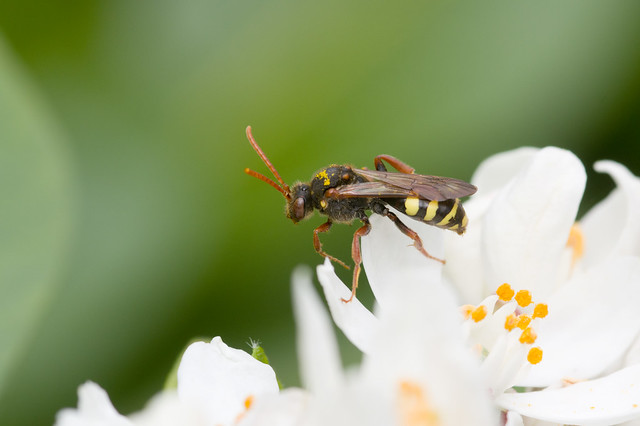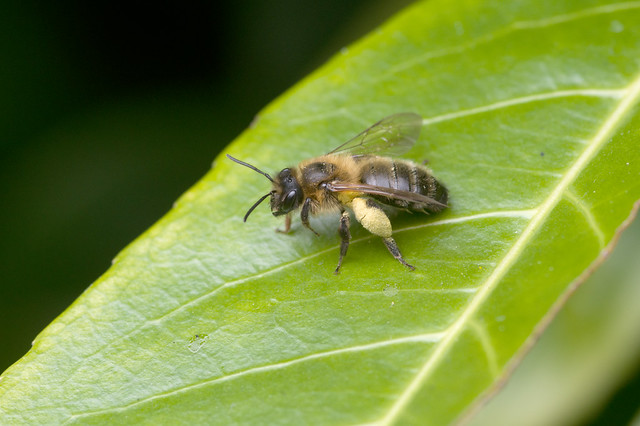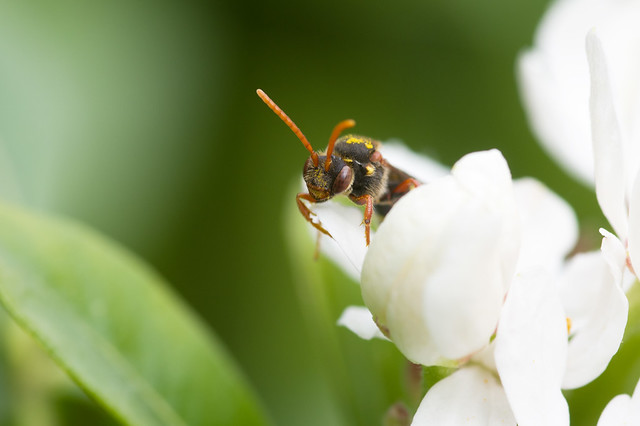A species that I've wanted to see for a while is the cuckoo bee Nomada marshamella, but until now every one I've found locally has turned out to be one of the other common species like goodeniana or flava. That changed yesterday when I had a quick check of the hedge in the front garden and spotted a large unfamiliar looking Nomad on a flower. I quickly grabbed a pot, and helped by the cool temperature was able to easily capture the bee for closer inspection.
It was quickly obvious that this wasn't another goodeniana, the scutellar spots and tegulae were both orange rather than yellow, and on closer inspection the yellow band on tergite 2 was broken. Consulting with the superb Field Guide to the Bees of Britain and Ireland it was quickly apparent that I had my first N.marshamella, result! With the Id confirmed I released the bee back onto the same hedge and she obligingly hung around for a few photos before flying away.
 |
| Nomada marshamella |
The Nomada bees are a fascinating group of around 850 species worldwide, of which 29 make their home in the UK. They're all cuckoo bees, laying their eggs in the nests of other bee species, where they hatch out before the host eggs, and devour the stores of food left there by the host mother. The hosts are often Andrena bees, as in the case of N.marshamella which is a cuckoo on Andrena scotica, but other bees such as Melitta and Lasioglossum are also used.
Identification is often tricky, although most Nomads are boldly marked with combinations of reds, blacks, yellows and whites, several species often share the same colour scheme, marking morphological features such as the shape of the mandibles key to clinching a confirmed Id. Association with a host species can also help narrow down the choices, but as many species of solitary bees will often nest in close proximity, and several Nomad species will use the same hosts, it's far from a guaranteed method.
 |
| Andrena scotica, the host of N.marshamella |
Nomada marshamella is the tenth species of these fascinating little bees I've seen, so just another 19 to find. A few of those species are extremely rare, but looking for them would take me to some lovely places, so I'll be happy to keep on searching for them.

No comments:
Post a Comment